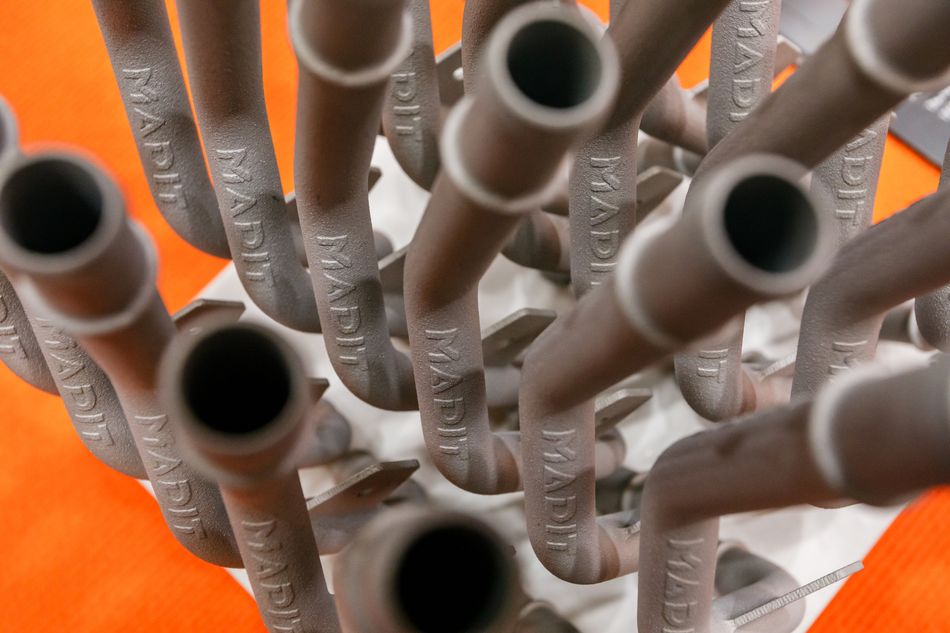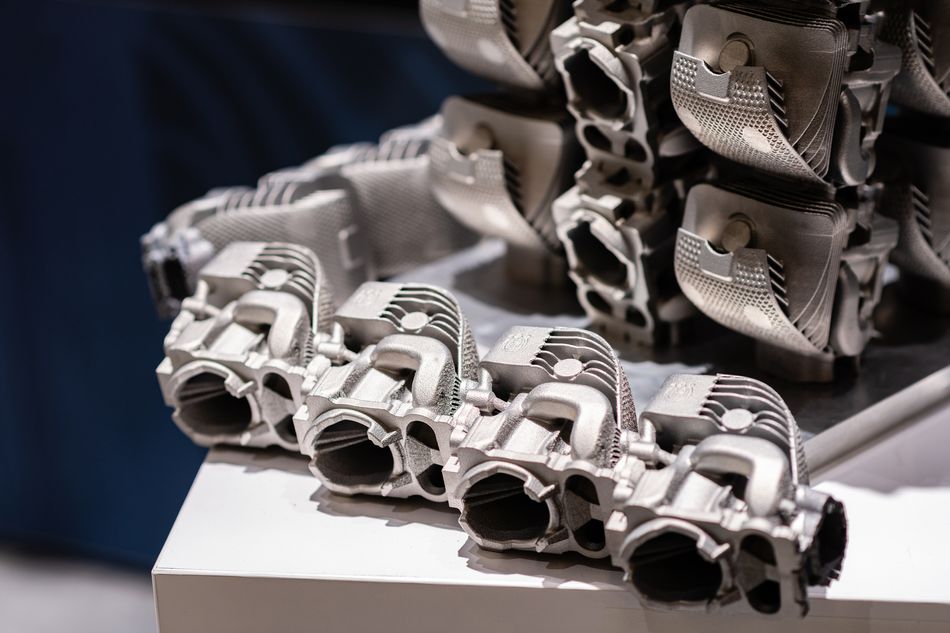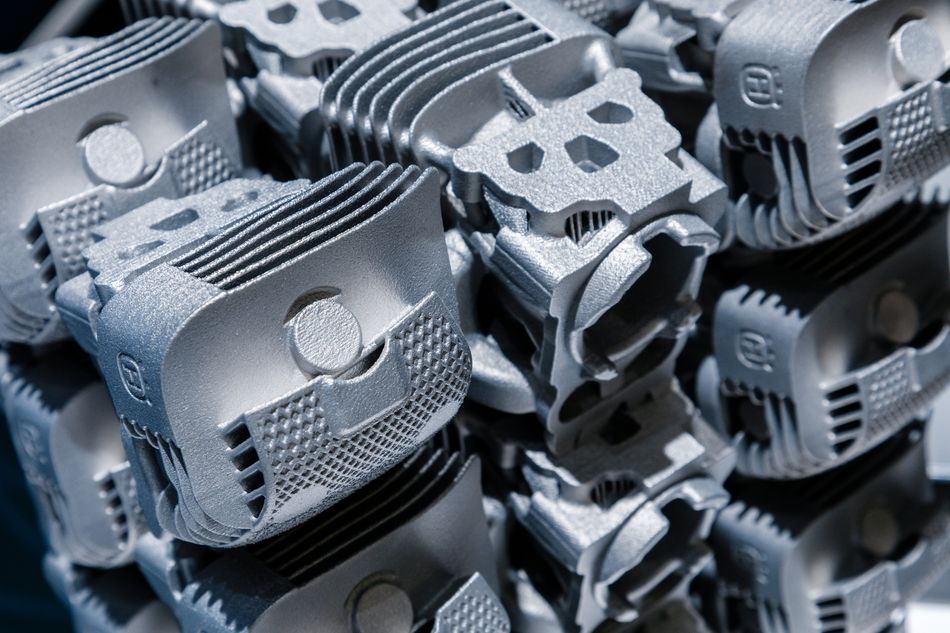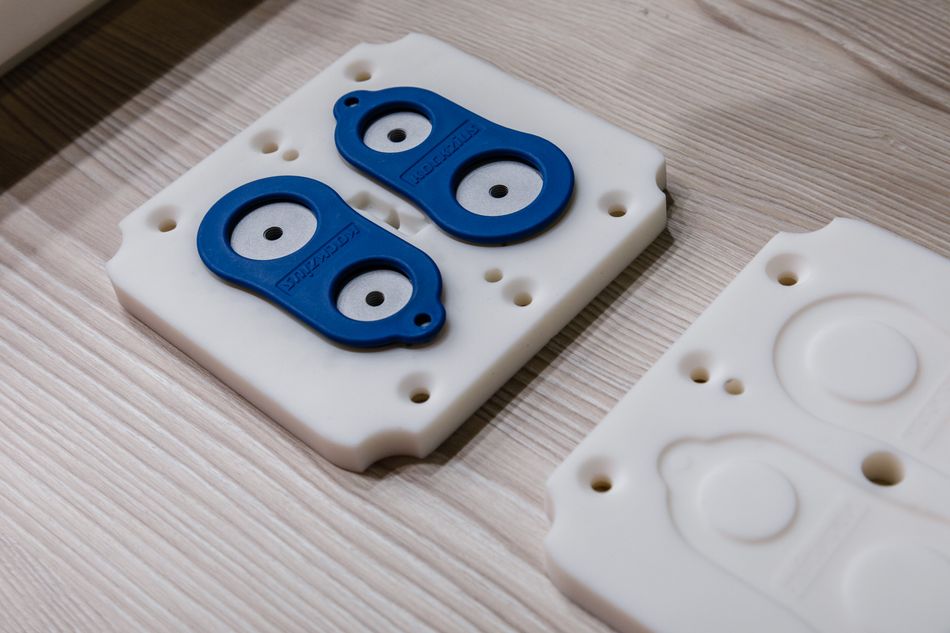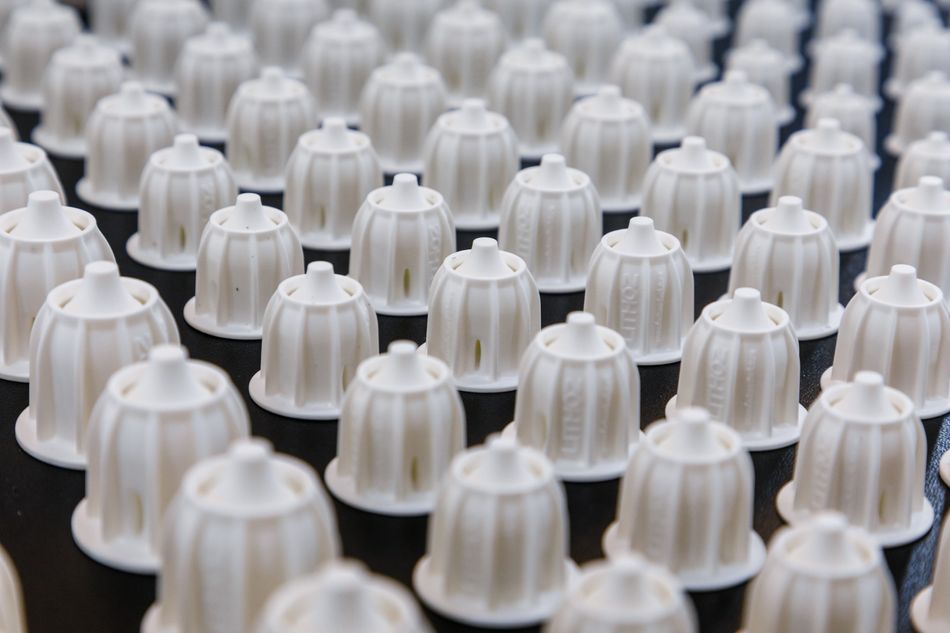The Shift Toward Localized Manufacturing: How 3D Printing is Reshaping Global Supply Chains
This article will discuss how 3D printing is enabling localized manufacturing by reducing dependency on global logistics and supporting supply chain flexibility.
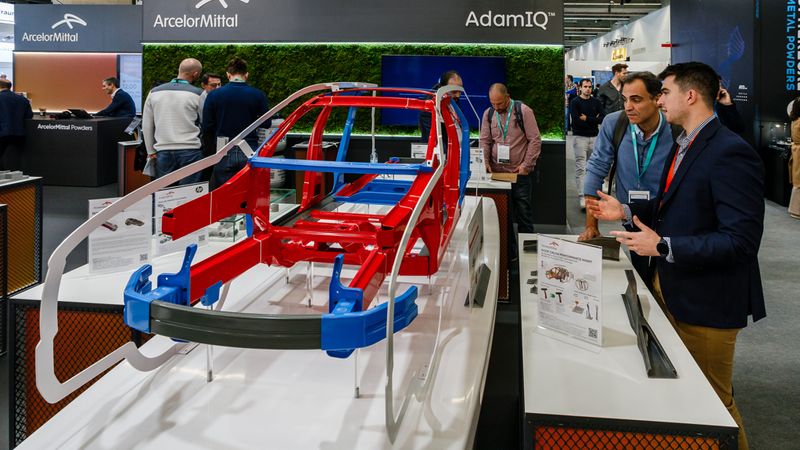
Roof crush performance insert at Formnext 2024. Copyright Formnext, Mesago, Marc Jacquemin
Global supply chains have faced major challenges in recent years, including the COVID-19 pandemic, geopolitical tensions, rising logistics costs and material shortages. These disruptions have exposed the risks of relying heavily on overseas production. In response, many manufacturers are turning to additive manufacturing (AM) to reshore operations, reduce lead times, and build more resilient supply chains.
This article will discuss how 3D printing is enabling localized manufacturing by reducing dependency on global logistics and supporting supply chain flexibility. It also explores how Formnext 2025 1 serves as a platform where leaders in industrial 3D printing come together to share innovations and drive the conversation on the future of decentralized manufacturing.
The Impact of Global Supply Chain Disruptions on Manufacturing
Lessons from recent crises
Global events such as the COVID-19 pandemic, and geopolitical conflicts, have revealed the structural risks hidden within global supply chains. The COVID-19 pandemic was a wake-up call for manufacturers worldwide as it brought production to a halt in many regions. Companies found themselves unable to secure critical components due to ports shut down, shipping containers stranded, and entire regions locked down. In parallel, escalating geopolitical tensions such as trade disputes, export bans, and regional conflicts have strained cross-border operations and amplified risk.
Manufacturers that relied heavily on single-source or offshore suppliers were unable to fulfill orders, causing ripple effects throughout the economy. These disruptions have also raised complex questions around accountability. When a part sourced from a third-party supplier fails, especially in high-stakes industries like aerospace or medical devices, who is held responsible? The lack of transparency and traceability in traditional, globalized supply chains often muddies the waters. As a result, legal liabilities and reputational risks are increasingly driving companies to reassess their sourcing models.
The growing need for supply chain resilience
Due to the aforementioned disruptions, leading manufacturers are now looking beyond just cost efficiency and considering strategies to build more agile, adaptable supply chains. Decentralized and digitally driven approaches, supported by technologies like AM, are becoming a key part of such strategies.
For instance, in an interview conducted by Formnext on the current state of the AM market, Rainer Lotz, President EMEA at Renishaw, stressed that despite short-term caution, long-term trends in advanced manufacturing continue to grow steadily. He highlighted how structural supply chain problems are pushing companies to localize production and invest in AM technologies for greater control and agility. 2
Stay informed on the latest developments in additive manufacturingGet early updates on Formnext 2025 speakers, exhibitors, and exclusive content by subscribing to the Formnext newsletter.Read more and register |
3D Printing as an Enabler of Localized Production
Ensuring repeatability despite variations in machines and materials
Ensuring consistent part quality across different printers, materials, and environments has been challenging for AM. However, as 3D printing shifts from prototyping to production, standardization efforts like material traceability systems, machine calibration protocols, and robust print process parameters are helping manufacturers achieve repeatable results. Emerging solutions, including AI-driven print monitoring and closed-loop feedback systems, allow real-time adjustments to maintain part quality, regardless of where a printer is located. Similarly, industry-wide initiatives, including ASTM and ISO standards, are also central in formalizing benchmarks for repeatability and part validation.
Reducing lead times and transportation costs
The immediate advantage of AM is the reduction in lead times. Instead of waiting weeks or months for overseas shipments, companies can print parts on-site or near-site within hours or days. This directly impacts operational efficiency and reduces both transportation costs and inventory overhead. Moreover, minimizing long-distance shipping and warehousing also helps companies lower their carbon footprint and respond faster to market demands.
Several companies have already begun integrating AM into their logistics chains. For example, at Formnext 2025, KSB, a global pump and valve supplier, demonstrated how it utilizes AM for on-demand production and digital inventories. KSB can rapidly produce spare parts and customized components, significantly reducing delivery times and increasing supply chain flexibility. KSB recently redesigned and delivered a critical pump component within three weeks, a process that would have taken much longer using conventional methods.3 This approach not only accelerated production but also allowed for product optimization, such as weight reduction and performance improvements, tailored to specific customer needs.
Supporting custom, on-demand manufacturing
Localized AM goes hand-in-hand with production-as-a-service (PaaS) business models. These models allow companies to outsource part production to localized AM hubs without investing in their own equipment. Users can upload a design, select preferred materials and specifications, and have the final part printed and delivered locally by using cloud-based manufacturing platforms. This model supports mass customization and reduces waste. It is very impactful for sectors like healthcare and consumer products, where personalized or low-volume parts are in high demand. The flexibility of on-demand AM allows businesses to shift from large-batch manufacturing to leaner, more responsive operations tailored to regional or individual needs.
Case Studies and Success Stories
Companies Successfully Implementing Localized 3D Printing Strategies
The change toward localized 3D printing is being adopted by industry leaders to boost agility and reduce dependency on global supply chains. The following examples demonstrate how organizations are utilizing AM to transform operations and achieve measurable results.
ZF Friedrichshafen AG is an international leader in mobility solutions, providing systems and components for commercial transport, passenger vehicles, and industrial applications. ZF Friedrichshafen AG implemented the 3D Spark platform to democratize AM within the company, enabling faster part request responses, reducing lead times by 50%, and improving accuracy by 25%. This centralized approach to AM production supports flexible, automated manufacturing and internal spare parts production, enhancing operational resilience. 4
Another notable case study from the energy sector involves Baker Hughes' collaboration with Oqton and the National Additive Manufacturing Institute (NAMI) in Saudi Arabia. This partnership shows the feasibility of decentralized manufacturing for highly regulated industrial parts, ensuring compliance with stringent standards while producing components near the point-of-use. This approach reduces inventory costs, enhances supply chain resilience, and lowers logistics expenses. 5
Regional hubs and decentralized production models
Globally, the Formnext exhibition reflects that AM is maturing into a reliable option for industrial production. More and more companies are now offering solutions designed to fit into local manufacturing setups.
Keselowski Advanced Manufacturing (KAM) exemplifies how companies are building regional AM hubs to scale decentralized production. Now part of the ADDMAN Group, KAM has rapidly expanded its AM capabilities, operating 18 EOS metal systems and a total of 36 metal and polymer systems, making it one of North America's largest AM service providers. EOS, the technology provider behind these systems, recently celebrated the global installation of its 5,000th machine, which reflects the wider industrial adoption of AM. The vision driving this expansion is rooted in EOS's digital, data-driven manufacturing model, which supports more sustainable and localized manufacturing methods. The success of KAM and ADDMAN demonstrates that AM is not limited to prototyping; it is a solution for industrial-scale, localized production. 6
Conclusion
Recent disruptions have exposed the vulnerabilities of traditional, centralized supply chains. In response, a growing number of companies are turning to AM to localize production, reduce dependency on global logistics, and increase supply chain flexibility.
Businesses that integrate AM gain greater control over production workflows, minimize risk, and position themselves for long-term success in an uncertain global environment.
For industry professionals eager to explore how 3D printing is driving this transformation, Formnext 2025 offers a unique opportunity. As the world's leading trade show for AM and industrial 3D printing, the event brings together pioneers, innovators, and decision-makers to share insights, discuss solutions, and chart the future of decentralized production. Attend Formnext 2025 to implement localized AM strategies, discover the latest technologies, and build new partnerships to stay ahead of the curve.
Stay informed on the latest developments in additive manufacturing and get early updates on Formnext 2025 speakers, exhibitors, and exclusive content by subscribing to the Formnext newsletter. Register now to receive updates and ensure you don't miss a moment of this industry-defining event:
References
Formnext – the industry hub for Additive Manufacturing [Online] Formnext. Available at: https://formnext.mesago.com/frankfurt/en.html (Accessed on May 8, 2025)
Interview on the current state of the Additive Manufacturing market (2024) [Online] Formnext. Available at: https://formnext.mesago.com/frankfurt/en/industry-insights/fonmag/fonmag_articles/articles/the-good-long-term-prospects-are-not-at-risk.html (Accessed on May 8, 2025)
Formnext Expert Insight - Parts On-Demand & Digitalize Supply Chain [Online] Formnext - Where ideas take shape-Youtube. Available at: https://www.youtube.com/watch?v=dbV4MSsJxwI&ab_channel=Formnext-Whereideastakeshape (Accessed on May 8, 2025)
Formnext Expert Insight - Breaking Barriers by Democratizing Additive Manufacturing [Online] Formnext - Where ideas take shape-Youtube. Available at: https://www.youtube.com/watch?v=k5e-9cj0Y2g&ab_channel=Formnext-Whereideastakeshape (Accessed on May 8, 2025)
Realizing the benefits of decentralized manufacturing of highly regulated parts in Energy industry (2024) [Online] Formnext. Available at: https://formnext.mesago.com/frankfurt/en/industry-insights/formnext_tv/formnext_tv_2024/realizing-the-benefits-of-decentralized-manufacturing-of-highly-regulated-parts-in-energy-industry.html (Accessed on May 8, 2025)
EOS has delivered its 5,000th machine (2025) [Online] Formnext. Available at: https://formnext.mesago.com/frankfurt/en/industry-insights/fonmag/fonmag_articles/articles/We-ll-reach-10000-installations-much-faster-than-the-first-100.html (Accessed on May 8, 2025)
Industry insights into industrial 3D printing [Online] Formnext. Available at: https://info.mesago.de/-lp/5HKPB14784/fzrx3153 (Accessed on May 8, 2025)

